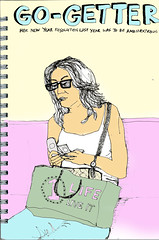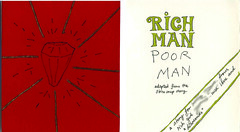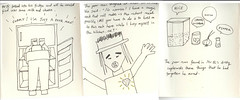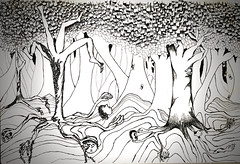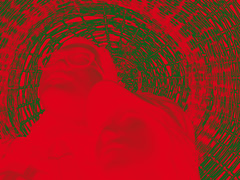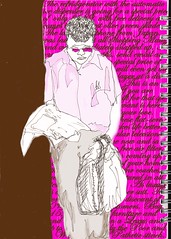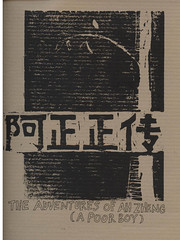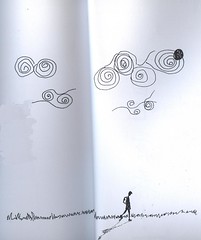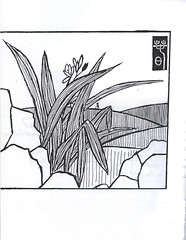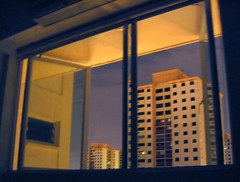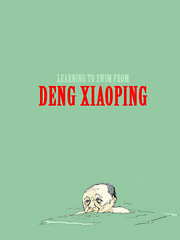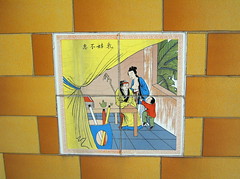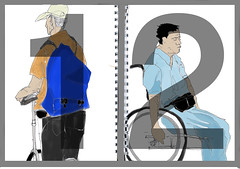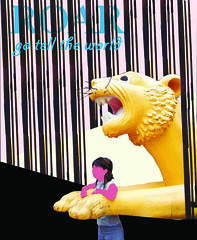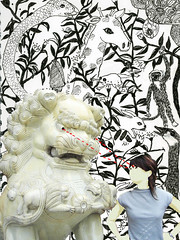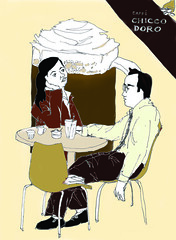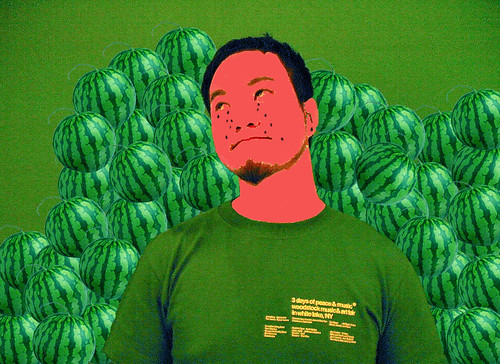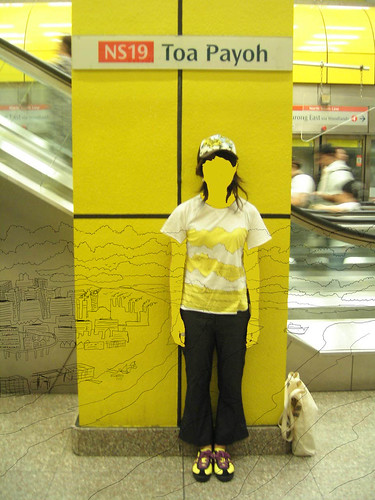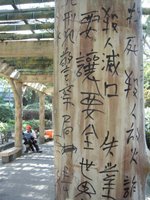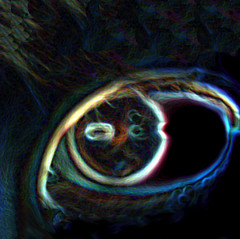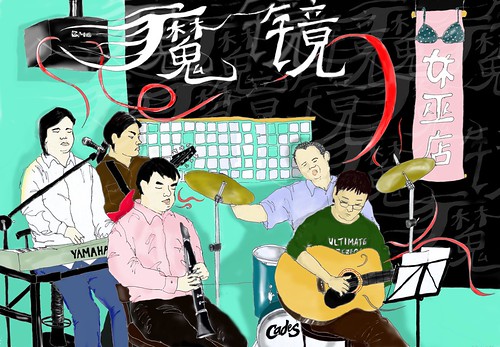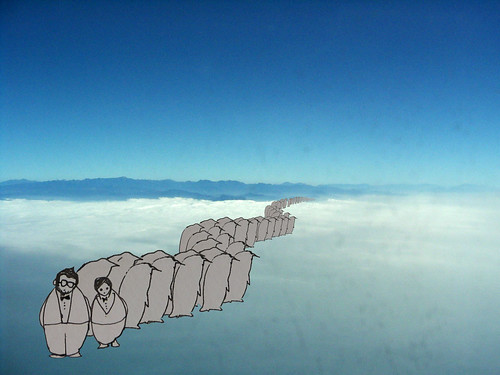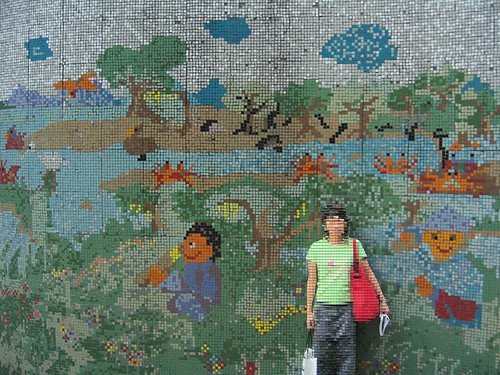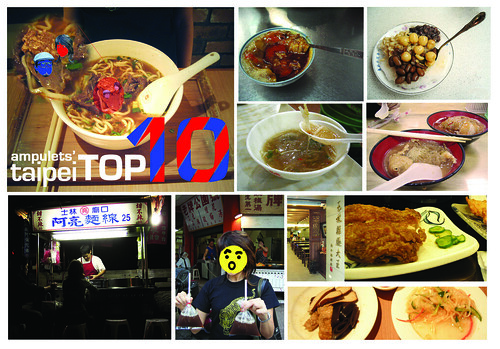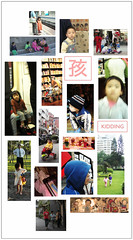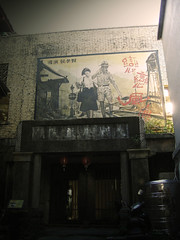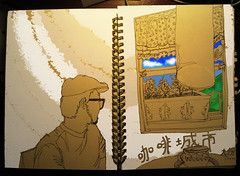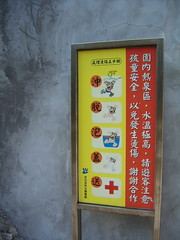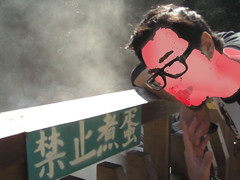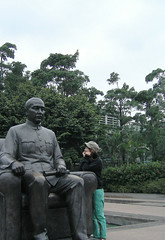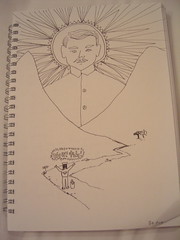Warning: a long postMy whole office trooped down to the Malay Heritage Centre at Kampung Gelam for a tour yesterday afternoon. The trip ended with a 5min lesson on how to weave a
ketupat which, for me, resulted in this duck-like object. Oh well.
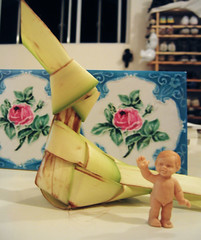 It's generally accepted that history is written by those in power
It's generally accepted that history is written by those in power - at least history as they understand it. In the case of
Singapore's history, anything post-1965 assumes a well-known narrative of independence and PAP-led growth. And with the date 1819, a colonial narrative is usually told starting with the arrival of that sly British "civil servant" Raffles (who supposedly could write Jawi?! impressive).
So it is perhaps telling that when we asked our guide for more information about
Sultan Hussein, his descendents and life at the Istana - there was little she could say. Or at least, little that she said which could be verified. The sultan did not leave many written documents. Neither did his descendents. And of the few documents on the Istana, most are the official ordinances, treaties, acts which the British had instituted instead -for eg, declaring the Istana crown property (hence the sultan & his descendents are, I guess, technically squatters?), dictating the annual allowances the Sultan and his family would receive etc.
This lack of literature - official or private - on the Sultanate and Istana strangely contrasts the cultural or literary going-ons on this island some 150 years ago. Believe it or not, Singapore was the centre of publishing for anything written in Jawi and romanised Malay. Poetry, romances and other fiction... How ironic that, today, we should have a whole archive full of official and historical documents, but no real
publishing industry to speak of!
I was reminded by yesterday's trip of my first visit to the Istana KampungGelam. It was 1997, 2 years before the government decided that it should be restored as a Malay Heritage Centre. I had to make a 10min short as part of a film course at the
substation, and so decided to make my own nostalgic romance/protest about the Istana's position in contemporary Singapore.
I interviewed a few strangers if they knew where or what was the Istana. I shot some footage outside the "real"/current Istana (President's office), and had the police come up to check what I was doing. Then with the help of an old classmate H, I planned to interview the residents of the Istana Kampung Gelam.
Friends, if you have been to the Istana before it was restored, you will know that it was basically more
kampung (i.e. village) than palatial. In the middle of the compound was the 2-storey building, designed by George Coleman. The sultan's descendents had rented out the first floor and the land within the compound to more than 10 families, some of whom I think were descendents of those who had worked for the Sultan. Their single-storey homes lined the compound walls, and all around the compound were their laundry, disused furniture, children's bicycles, cats, chickens... The sultan's descendents who lived on the upper floor, ran a catering business, so their plastic chairs and other catering wares were stacked in a corner. The day we were there, the place was deserted.
H and I loitered around shooting clips of the chickens and laundry before we saw someone look out from the second floor - a young bespectacled lady with a curly bob (later we found out she was married to one of the Sultan's descendents). H asked and she agreed to speak to us and show us around the second floor...
We entered the Istana. It was mostly darkness...until we got to the second floor. I remember standing in a large and cool airy hall. In the middle was a wooden sofa set with patterned cushions. Light came in through the tall windows that lined the hall. A dancing sort of light because it was a breezy day and the curtains ( cheerful sunflower prints) were drawn over the windows.
H did most of the talking. And I recorded the short interview (but I lost the tape recorder the next day), clumsily holding in the other hand a borrowed Russian 16mm film camera. The conversation revolved mostly around what she knew about the family's history and their life in this Istana. She did not know much about the history, and seemed happy that the past did not get in the way of their daily life and business (Of course, there was a fair bit of controversy when the government took back the Istana, on grounds that it was technically state land) Then the conversation ended, and H and I went for a cup of
teh tarik nearby.
Maybe one day I'll transfer the film to DV. And maybe not. Regardless, those scattered memories and images still remain. 2 images clearest in my mind are of laundry that's been left out to dry along the compound's wall, a sarong/cloth waving so slightly in the breeze; and those second-floor curtains of sunflowers, at times bleached by the sunlight and moved by the wind.
______________________________
p/s- some related links
According to this site, there are historical documents by the palace scribe. And this blogger's grandma used to live there. Here's also Alfian Sa'at's take on the Istana being turned into the Malay Heritage Centre. And if you google Istana Kampung Glam, you'll find many more articles of protest.
